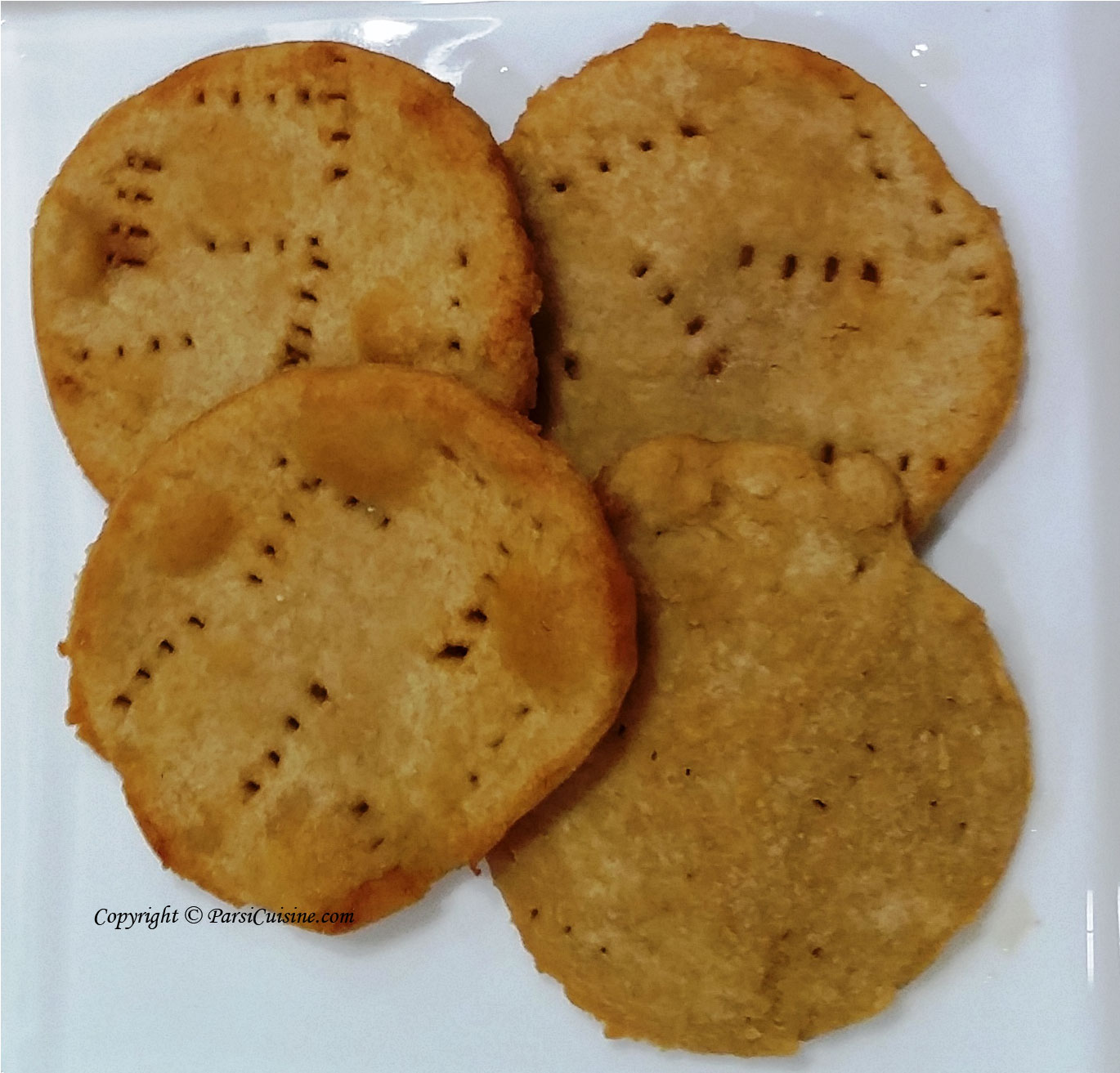
Papri and Daran for Malido
Papdi to eat with Malido from the famous Vividh Vani cookbook
Recipe translated from Gujarati to English by Rita Jamshed Kapadia
Click here for the Guide to Old Measures
Ingredients
1 tipri Wheat Flour (See tipri measure)
1/4 lb Sugar (fine barik)
Method
Mix above with little water to make a very tight dough. Keep for 1 hour and then roll out into very thin 3 inch rounds.
Prick holes in papdi so that it does not fluff up.
Heat pure ghee and fry in deep kadai till golden brown and crispy.
Drain on paper towels and let cool, dry. Do not pack away, keep open for 3 hours.
—
If making “Farmaasu” papdi use milk instead of water to make the dough and add the following:
2 tola Ghee
4 Egg Yolks
1/4 tsp ground caraway seeds
1/4 tsp ground cardamon
Milk to make the dough
Method
Mix above with little water to make a very tight dough. Keep for 1 hour and then roll out into very thin 3 inch rounds.
Prick holes in papdi so that it does not fluff up.
Heat pure ghee and fry in deep kadai till golden brown and crispy.
Drain on paper towels and let cool, dry. Do not pack away, keep open for 3 hours.
Note the vividh vani recipe does NOT mention salt. Modern day cooks do add salt to papdi. Never in a Daran.
Useful Tips
-
Use luke warm water to make the dough and cook them on slow heat it will come out very flaky
-
Prick the papri with a fork so they do not fluff up while frying, and will fry crisp. Drain and cool well before storing
-
Roll papdi as thin as possible
-
While preparing the dough add ghee and rub it in the flour to get crumb consistency than add water & knead into tight dough.
-
Don’t use any ghee or oil while making dough
-
While frying, you have to press the papri
Traditions
-
Traditionaly, for a khushali nu jashan, there would be just Malido, no papris and no darans, those were included only for the ‘baj’ -prayers for the departed souls – people even include Sev, Ravo and Golab nu Sherbet for the khushali nu jashan.
-
In a khushali nu jashan should you put Malido as an offering or is it Ravo ? – Both. A little of each can be put as an offering just like with various fruits and nuts.
What’s the difference between papri and daran to eat with malido?
-
Papri is fried like a puri.
-
Papri is sweet.
-
Farmasu Papri is made with milk, egg yolk, caraway seed and cardamon.
-
Daran are like small rotlis or chappaties slightly thicker and roasted on a tava.
-
Daran is not salted ever. No is salt added and roasted like rotli



Megala
Nov 11, 2018, 8:32 amWonderful recipes! Thanks a lot for sharing these traditional recipes.
Rita
Nov 11, 2018, 6:10 pmThanks Megala, just like you I like to spread and share my knowledge, while learning myself and cooking.
Megala
Nov 11, 2018, 12:42 amAnonymous
Nov 11, 2020, 7:11 amThank you for the recipes
Rita Jamshed Kapadia
Nov 11, 2020, 8:23 amThanks for your visit and appreciate it. Rita
Shernaz
May 5, 2021, 11:11 pmGranby used to make a lovely dishwasher leftover daran
Cooked in milk jaggery and coconut